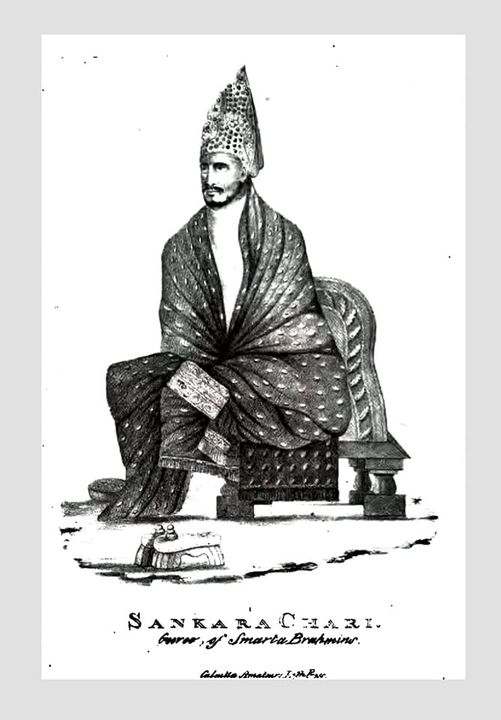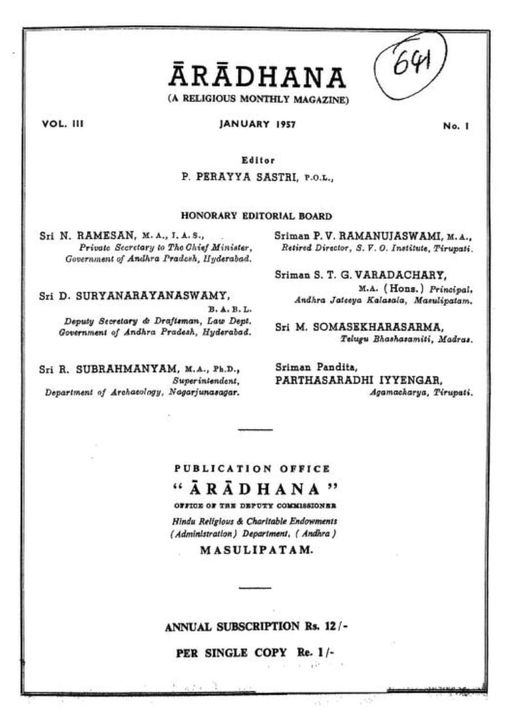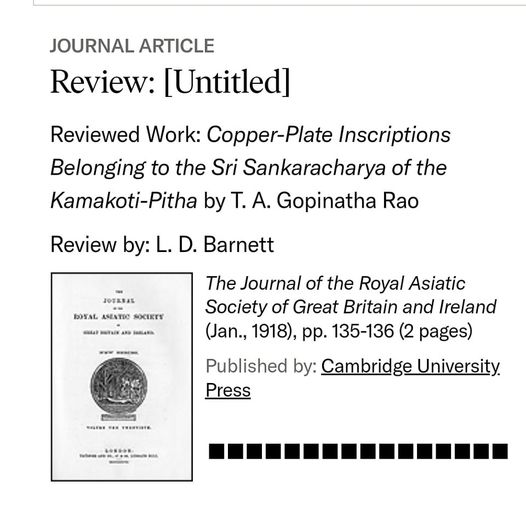Sankaracharya : Biographical Sketches of Dekkan Poets – Being Memoirs of the Lives of Several Eminent Bards Both Ancient And Modern, Who Have Flourished In Different Provinces of the Indian Peninsula Compiled From Authentic Documents, By Cavelley Venkata Ramaswamie Late Head Translator And Pandit In the Literary And Antiquarian Department, Calcutta (1829)
Month: November 2022
Andhra Kalidasa’s Sankaravijayam
Alluri Kuppanna ( Andhra Kaldasa) : 18th century Telugu poet, son of Venkatesa and Narasamambika, an inhabitant of the region bordering on the Krishna river.
From his infancy he studied Telugu and Sanskrit and in due time became a poet of considerable merit. He travelled through various countries.
Later he became a pupil of Kasturi Rangayya, a great poet and head of the French peons in Trichinopoly and composer of many odes on his French masters.
Alluri Kuppanna migrated to the Tanjore Mahratta kingdom. He also became an asthana vivian in Rajesri Tulajaji Maharaja’s (1763-1787) palace darbar.
Alluri Kuppanna, translated the Sankara Vijaya of Anandagiri into Telugu (Acharya Vijayamu). In appreciation of his great work, King Tulajaji, conferred the worthy title of ‘Andhra Kalidasa’ .
Alluri Kuppana wrote many works of which may be mentioned Panchanada Sthalapurana, Yakshaganas of the Ramayana and Bhagavata stories, Parama Bhagavata Charitra, Indumati Parinaya and Karmapaka.
Cauvelly Venkata Ramaswamie, in his 1828 publication, The Biographical Sketches of Deccan Poets says,”The Telugu Translation of Anandagiri’s Sankaravijayam, Andhra Kalidasa Kavi’s Acharya Vijayamu is still in existence and extensively circulated in the Telugu country.”
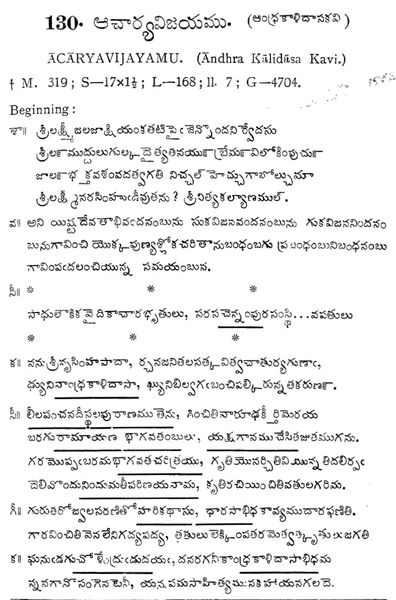
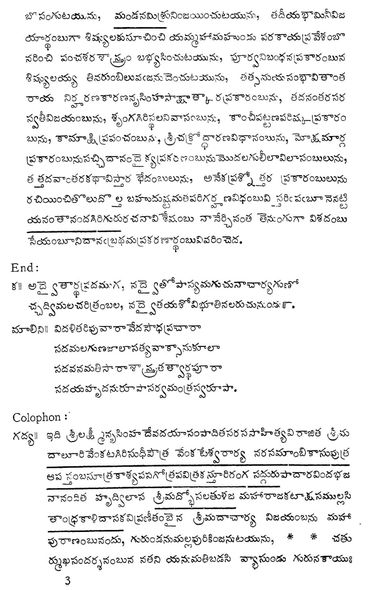
ARADHANA, Monthly Magazine of the Hindu Religious And Charitable Endowments Dept. Andhra, Vol.3, 1957
ఆరాధన సంపుటము 3, 1957
by పి పేరయ్యశాస్త్రి(సం.)
(ARADHANA, Monthly Magazine of the Hindu Religious And Charitable Endowments Dept. Andhra, Vol.3, 1957)
SOURCES FOR SANKARACHARYA’S LIFE… 1
The sources for the life of Sankara Bhagavadpadacharya are very scanty and meagre, as is the case with almost the life of every early great Indian.
Sankaracharya himself was a great writer, and has left us a remarkable collection of writings, which reflect the power of his thought, and the greatness of his conception.
The most noteworthy of His works, are his classic commentaries on the Brahma Sutras, the Gita, and the Upanishads. The Upadesha Sahasri’ and “Vivekachudamani’ are composite works by Sankaracharya, which reflect His general tenets. But unfortunately for us, these works of the master, do not contain much of useful biographical material. We have, therefore, mainly to depend upon the works of His disciples.
A number of biographies of Sankaracharya, called ‘Sankara Vijayas’ have been written by his disciples, the most important of them being Madhava’s “Sankara Digvijaya” and Anandagiri’s “Sankara vijaya”.
….
Anandagiri’s biography is generally held to be the most authoritative. Anandagiri is held to be the same as “Thotakacharya’ who was one of the four important disciples of Sankaracharya.
‘Advaita Samrajya Lakshimi,’ a commentator upon the Madhaveeya Sankara Vijaya, holds that Anandagiri was a direct and dear disciple of Sri Sankaracharya. He says:
” शङ्करस्य भगवतो भाष्यकारस्यायं शाङ्करः आनन्दगिर्यभिधः तस्य तत्प्रियशिष्यस्य वाक्यसारः”
The Dindima commentary on the Madhaveeya Sankara Vijaya gives a list of the prominent disciples of Sri Sankaracharya as following :
” अथ अनन्तरं पद्मपाद, हस्तामलक, समित्पाणि, चिद्विलास, विज्ञानकन्द, विष्णुगुप्त, शुद्धकीर्ति, भानुमरीचि, कृष्णदर्शन, बुद्धिवृद्धि, विरिधिपाद, शुद्धानन्द,गिरिप्रमुखैः”
Anandagiri’s Sankara Vijaya also gives the same list of the disciples in the following words: G”पद्भपाद, हस्तामलक, समित्पाणि, चिद्विलास, विज्ञानकन्द विष्णुगुप्त, युद्धकीर्ति, भानु मरीचि, कृष्णदर्शन, बुद्धिवृद्धि, विरिविपाद, शुद्धानन्द, गिरिप्रमुखैः”
So, we may assume that Anandagiri was a contemporaneous and direct disciple of Sri Sankaracharya and that his biography would contain the most accurate information about the life of the great Acharya.
The Journal of the Royal Asiatic Society (Jan.1918)
COPPER-PLATE INSCRIPTIONS BELONGING TO THE SRI SANKARACHARYA OF THE KAMAKOTI-PITHA. Edited By T. A. GOPINATHA RAO, M.A. Madras, (1917) – Book Review By L.D. BARNETT
In this volume Mr. Gopinatha Rao gives the text and translation of ten grants engraved on copper-plates, which belong to the monastery at Kumbakonam, known as the Kama-kōti-pitha, one of the establishments claiming descent from the great Sankaracharya.
The documents comprise grants of Vijaya-ganda-gopala (circa A.D. 1260),
Vira Narasimhha-deva (Saka 1429), Krishna-deva-rāya (Saka 1444 and 1450),
Vijaya Raghunatha Tondaiman of Pudukōṭṭai (Saka 1613), Vijayaranga Chokkanatha Nayanayyavaru (Saka 1630), and one of the Emperors of Delhi (Hijra 1088), together with a fragment of a grant issued by one of the Vijayanagara kings of the last dynasty and a document of Saka 1608, which is interesting from its mention of Akkanna and Madanna, the notorious favourites of the Kutb Shahi Sultan Abu’l-Hasan of Golkonda.
They are in Sanskrit, Tamil, Telugu, and even (in the case of the Delhi firman) Persian transliterated into the Telugu character.
In our opinion the editor would have done well to transcribe each document in the script in which it is actually written, or else into Roman; instead of doing so, however, he has given alike the Sanskrit, the Telugu, and the Persian in Nagari character. In defence of this course he may plead the example of certain distinguished writers in the Epigraphia Indica; but two blacks do not make a white, and the transliteration of a complicated Southern alphabet like Telugu into such a disparate script as Nagari leads to most unhappy results.
Apart from this minor point, the work is carefully and correctly done-perhaps a little too correctly, for the learned editor has given in his notes the correct forms for all vulgar and archaic spellings, which is hardly necessary in every case and is illustrated by good plates. The only real desideratum is an index.
L. D. BARNETT.

